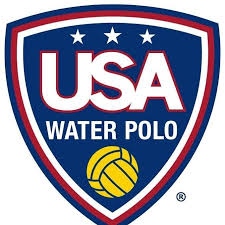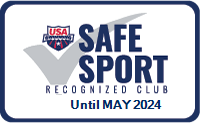PAC Volunteer Job Descriptions
ADMISSIONS
-
When you arrive, check-in at the volunteer check-in table, review your job assignment with the volunteer coordinator, and be in place by your assigned shift start time.
-
If you are the first shift of the day, get the wristbands and money box from the coaching staff.
-
Sell spectator wristbands/tickets at the front door (field house entrance).
AWARDS
-
When you arrive, check-in at the volunteer check-in table, review your job assignment with the volunteer coordinator, and be in place by your assigned shift start time.
-
Get labels from the computer table and affix these labels to the correct medals/ribbons. The runner should deliver the labels to you.
-
Prepare an envelope for each team with their awards. As you label the medals/ribbons, place the medal/ribbon in the appropriate team folder.
CONCESSIONS
- When you arrive, check-in at the volunteer check-in table, review your job assignment with the volunteer coordinator, and be in place by your assigned shift start time.
-
If you are the first shift of the day, get the wristbands and money box from coaching staff
-
Sell food and drink at the concessions stand.
-
Manage inventory levels
-
At the end of the day, clean up concession stand and put food/drinks in storage. Make sure that Stevenson security working the meet are the people who take the money.
HOSPITALITY
-
When you arrive, check-in at the volunteer check-in table, review your job assignment with the volunteer coordinator, and be in place by your assigned shift start time.
-
Help keep drinks, buffet items, snack bowls filled – restock as necessary.
-
Delivery snacks/water to officials and timers on deck.
- Clean up and return leftover items to storage at the end of each day.
-
Clean up after coaches and officials to make sure the tables are clean and the buffet is tidy.
RUNNER
-
When you arrive, check-in at the volunteer check-in table, review your job assignment with the volunteer coordinator, and be in place by your assigned shift start time.
-
Before the meet, check in with the computer table. Find out any specific procedures they would like to follow for delivery or heat sheets and results.
-
After each event, collect heat sheets from lane timers. Assemble in numerical order. Deliver to the computer table.
-
When computer table has printed results available, take results and post (tape to wall or adhere using stickers) in the following spots: (1) in the glass commons, (2) in he hospitality room, (3) in the field house, and (4) any other location the computer table tells you to post. Post results in order, making efficient use of space (cover any blank space on results page with another page of results, so that the results sheets are layered). Post all of the boys results together and all of the girls results together.
-
Run any other errands, posting, make deliveries, etc. requested by the computer table, head timer, or officials. For example, you may be asked to delivery labels to the awards room.
HEAD TIMER
PRIOR TO THE FIRST EVENT:
-
When you arrive, check-in at the volunteer check-in table, review your job assignment with the volunteer coordinator, and be in place by your assigned shift start time.
-
Confirm that each lane has two timers. Make sure that one of the lane timers is recording times on the heat sheet and that both lane timers are using stopwatches and plungers.
-
Check that each timer has 2 stop watches and that they are operating properly. There are extra stop watches if needed.
-
Make sure that each lane has a clipboard, pencil, and heat sheets.
-
Attend the Timer Briefing. This meeting covers all lane timer responsibilities. The Starter is in charge of the Timer Briefing. At this meeting, please introduce yourself to the lane timers and explain to them that if they need a replacement watch or need to take a break, they should raise their hand and you will come give them a new watch or stand in their place while they take a quick break.
DURING THE MEET:
-
At the start of each race, start both of your stopwatches.
-
Immediately after the start and throughout the race, look at the lane timers to see if any hands are raised. If a lane timer has raised his hand, exchange one of your stopwatches that is running with the correct time with their watch that did not start. Encourage timers to look at their watches immediately after the race has started to verify their watch is running with the correct time.
-
At the end of each heat, clear both of your stopwatches to prepare for the next race.
-
Observe whether the Lane Timers are watching the strobe light at the start, looking over the edge at the finish, not clearing their watches prematurely, etc. Assure that the Head Lane Timers are recording the times properly, listing the times as instructed, writing numbers clearly and recording times in a consistent order. If any are not performing efficiently, reinstruct them.
-
Make sure each lane remains staffed. Volunteer timers do sometimes leave without giving notice. Be prepared to move people between lanes to maintain consistent coverage. Keep the Referee informed regarding your staffing situation so that heats are not started if there are insufficient timing personnel in place.
-
Make sure the runner is collecting all of the heat sheets after each heat or event and delivering them to the computer table in a timely matter.
AFTER THE MEET:
-
Make sure the heat sheets from the last heat/event are collected and delivered to the computer table.
-
Collect and account for all watches, clipboards, and pencils.
-
Straighten chairs behind each lane and pick up any trash behind the blocks.
-
Note any problems and inform the Meet Director or other responsible official of any inoperable watches.
TIMERS
-
When you arrive, check-in at the volunteer check-in table, review your job assignment with the volunteer coordinator, and be in place by your assigned shift start time.
-
Attend the Timer meeting approximately 15 minutes before the start of the meet. The meeting will be in the hallway off the west side of the pool.
-
You will be operating one stopwatch and one button (plunger).
-
Become familiar with the watch you will be using at the meet. In particular, know which button starts, stops and clears (resets) the watch. Start and stop the watch with the same finger.
-
Check each swimmer’s name, preferably by asking for the swimmer’s name. For relays, please check the team and the order in which the swimmers compete.
-
Do not engage in conversation with swimmers prior to their race unless they initiate the conversation.
-
Prior to the race sit or stand (if no chairs are provided) far enough back so you will not distract the starter or competing swimmers.
-
At the start, focus on the starting device (strobe light or gun flash) and start your watch on that signal, rather than the sound.
-
Once each heat has started, check to be sure your watch is running. If it is not or you think you started it late, signal the Head Timer by raising your hand with the watch showing.
-
Be at the edge of the pool at the finish. You must be looking down over the forward edge to see an underwater touch. Expect to get wet. Stop your watch when any part of the swimmer’s body touches the wall. You are not concerned with whether the finish was legal.
-
Always push the same button at the finish.
-
Times should always be recorded to the hundredths of a second (two decimal places), and in the same order for each heat. If there is no one in the lane, record "No Swimmer" as N/S.
-
Stay focused on your duties, particularly during the start and finish. Do not cheer for particular swimmers and do not get so interested in watching a race in another lane that you do not get an accurate time for the lane you are timing.
-
If you need to take a short break, raise your hand and the Head Timer will stand in for you during your break.
-
When flyover starts are being used, at the end of the race, leave the time on the stopwatch (do not clear it). Use the second stopwatch to start the next heat. Once the next heat is started, record the times from the previous heat, then clear the first stopwatch.
-
At the Timer Briefing just prior to the beginning of the meet, the officials will tell you what to do if there is no swimmer in your lane for a particular heat.
-
Absolutely NO cell phones may be used while timing. Do not text or use cell phones during the meet. Ask the Head Timer for relief if you need to use your phone.
-
No cameras, cell phone cameras, or other recording devices are allowed behind the blocks at any time. If you observe camera use behind the blocks, notify the Head Timer or the nearest Official, who will then notify the Deck Referee.
SAFETY MARSHAL
WHEN YOU ARRIVE:
-
Check-in at the volunteer check-in table, get your safety marshal vest, review specific job assignments, and be in place by your assigned shift start time. You must wear the safety marshal vest at all times.
-
It is very important that you arrive early! No swimmers can be on deck or in the water until safety marshals are in place.
ONLY COACHES, OFFICIALS, SWIMMERS, AND VOLUNTEERS ARE ALLOWED ON DECK!
-
It is your job to monitor the doorways and make sure no unauthorized persons enter the pool area. The only people allowed on deck are coaches, officials, volunteers, and swimmers.
-
No parents are allowed on deck unless they are there for a volunteer shift (they will be wearing a volunteer name tag).
-
If someone tries to go on deck without approval, please notify the Meet Director and have the Meet Director deal with the person.
WARM-UP & WARM-DOWN PROCEDURES:
-
Help enforce the warm-up and warm–down rules:
-
No diving. Feet-first entry only, except in one-way sprint lanes (controlled warm-up only).
-
No Backstroke starts except in a controlled one-way sprint lane. (They are dives.)
-
No socializing in warm-up/warm-down lanes. Swimming only.
-
Monitor the warm-down area throughout the meet.
-
Do not have your back to the pool when monitoring a warm-up/down area.
SAFETY ON DECK:
-
Remind swimmers that running, horseplay, whipping towels, etc. are dangerous and must be stopped.
-
Remind if necessary that glass is not allowed on deck or in the locker rooms.
-
Report any unsafe areas on the deck to the Meet Referee including loose wires, slippery areas, loose blocks, too many swimmers in a lane, any other things you consider dangerous.
BIO-HAZARDS ON DECK:
-
If you see blood on the deck or a bleeding swimmer, immediately notify the Referee and first aid staff. Help cordon off the bloody area until it is properly cleaned.
-
If a swimmer has vomited or had an accident on deck, please help keep the area clear until the proper staff has arrived to clean it up.
-
Locate the first aid station including: First Aid kit, spinal backboard, rescue implements, AED (Automated External Defibrillator) and the Emergency Action Plan (EAP). The EAP should list important phone numbers, protocol for getting help, name or position of the person on deck responsible for activating the EAP.
NO CELL PHONE OR VIDEO USE:
-
Enforce the policies that NO cell phones can be used behind the blocks and NO videotaping is allowed on deck.
-
No Cell Phones includes you as safety marshal. Please keep your phone on vibrate and do not use your phone or video/camera equipment on deck. If you have an emergency and need to use your phone, please have a relief volunteer step in your position while you take a short break. Do not leave your post until a relief person or replacement is there.
PAY ATTENTION to the meet!
-
Do NOT leave the area without the approval of the volunteer coordinator.
-
Remain in your assigned position until someone comes to relieve you or reassign you.
Remember: Safety is the Primary Concern.










